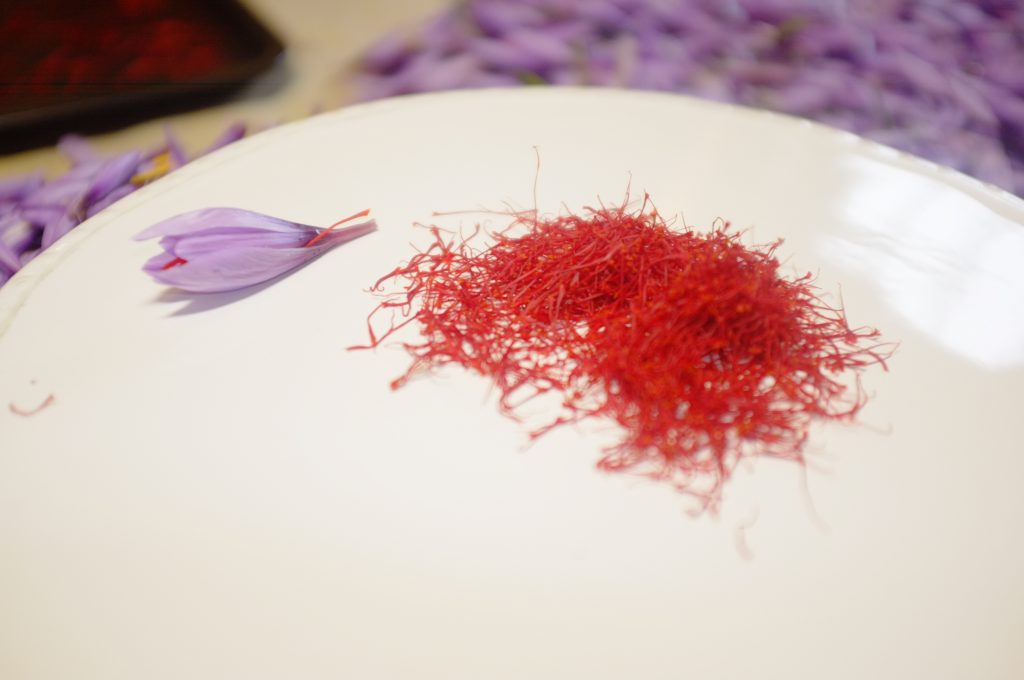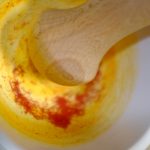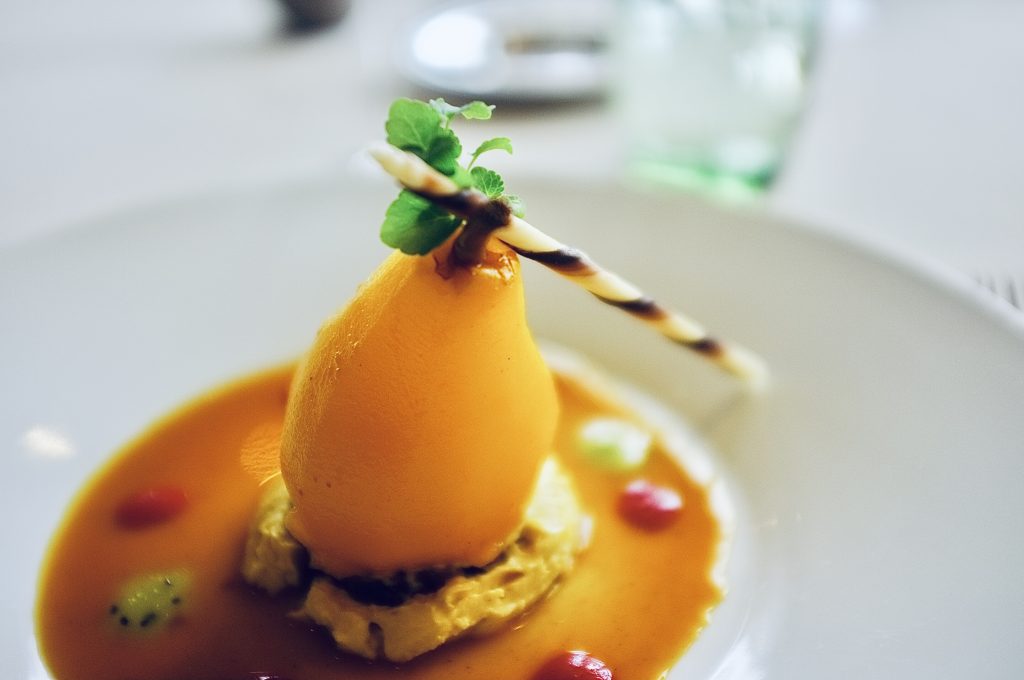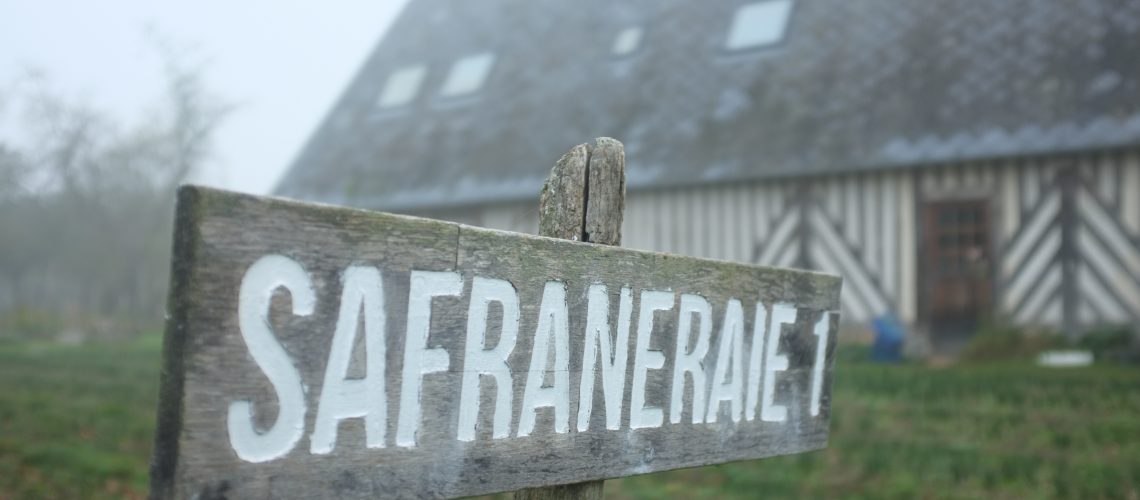In October last year, I was lucky enough to join a group of food writers on a visit to Normandy, where I learned about growing and harvesting saffron, as well as tips to make the most of this precious and delicate foodstuff.
Domaine de Gauville – near Brionne – is one of the few saffron farms in France. The owner, Myriam bought the place as a retreat from her hectic Parisian life and soon discovered that it used to be a saffron farm.
Not only did she have no idea the precious flower could grow there, but was also unaware that France – along with England – had been the main producer of saffron up until the 18th century. As every step of the process has to be done manually, saffron farming gradually gave way to extensive agriculture.
After a few years juggling the farm and her work in Paris, Myriam finally gave up her high-flying career as a TV producer (she’s actually the one who set up the first French food-dedicated TV channel) to focus on her saffron farm.
As our visit coincides with the flowering period, we witnessed the whole process – from picking to collecting the delicate stigmas in the flower itself. So delicate is the flower that every step has to be done by hand.

As our hostess pointed out, there’s no way they can tell when they will be ready to harvest: “The only thing we know, is that, when the flowers start to open, we have to be quick, really quick. Some days, we’ll have 2000 flowers to pick, the next day it can be 10 000!” And as soon as they do, not only they have to be picked, but also the stigmas have to be collected. “Even the next day, it’s too late. It has to be done immediately. The people helping me are fantastic…it’s not rare we finish at 1, 2, sometimes 4 am!”

The discussion then turns to the culinary properties of the product itself. Myriam insists that saffron needs to be thoroughly re-hydrated in order to fully develop its flavour. She mentions one of her chef friends who soaks the product for up to 24 hours.“And that makes sense, she says, during the drying-out process saffron loses about 80% of its weight, which is water, so you need to recreate that balance”.

As we’re parting, Myriam adds that if it’s cheap saffron, it’s not saffron.
